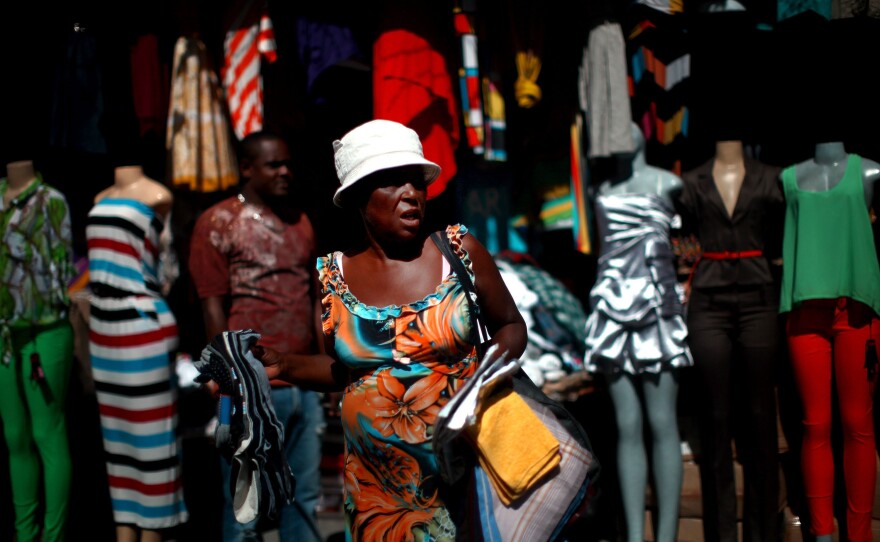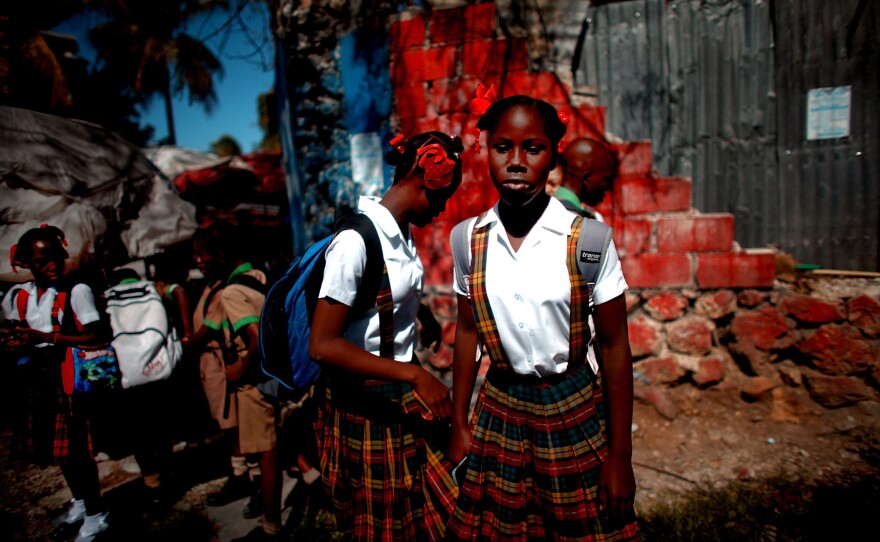Evidence of loss remains even three years after a massive earthquake claimed the lives of as many as 200,000 people in Haiti. In the middle of Haiti's capital, Port-au-Prince, there is a cathedral whose sun-washed walls reach into the sky where a roof used to be.
A lone flagpole marks the spot where the National Palace, a symbol of Haiti's government, once proudly stood.
And on a downtown street that once bustled with storefronts, there is now a row of vendors who sell their wares under tent poles and umbrellas.
These are some of the "then and now" images from NPR photographer David Gilkey. One of the first photojournalists to capture the grim aftermath of the quake, he traveled back to Haiti to revisit images he originally took in 2010.
"I'm not out walking the streets looking for beauty in any of it," Gilkey said in 2010. "It's not just reporting. It's not just taking pictures. It's: Do those products, do the visuals, do the stories — do they change somebody's mind enough to take action?"
Of course, his photos show progress and transition, as well. A hillside of crumbled cinder-block houses is now being rebuilt. Scenes of looting and panic amid the rubble have been transformed into orderly streets. In the place of men toting guns and wielding rubble are children wearing pressed white shirts and neatly pleated plaid uniforms on their way home from school.
David Gilkey and NPR Global Health correspondent Jason Beaubien spoke withMorning Edition 's Renee Montagne from Port-au-Prince about the progress they're seeing on the ground in Haiti. Hear that conversation at the audio link above.
Copyright 2020 NPR. To see more, visit https://www.npr.org. 9(MDAyNDY5ODMwMDEyMjg3NjMzMTE1ZjE2MA001))


















